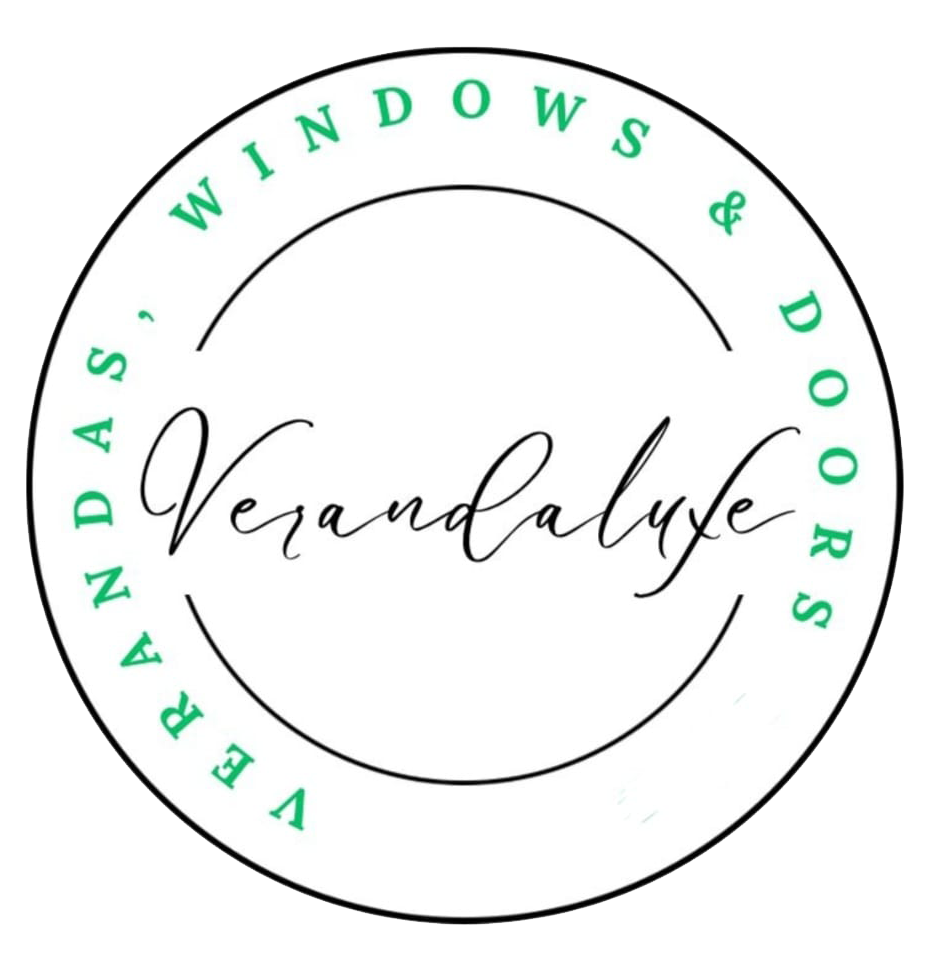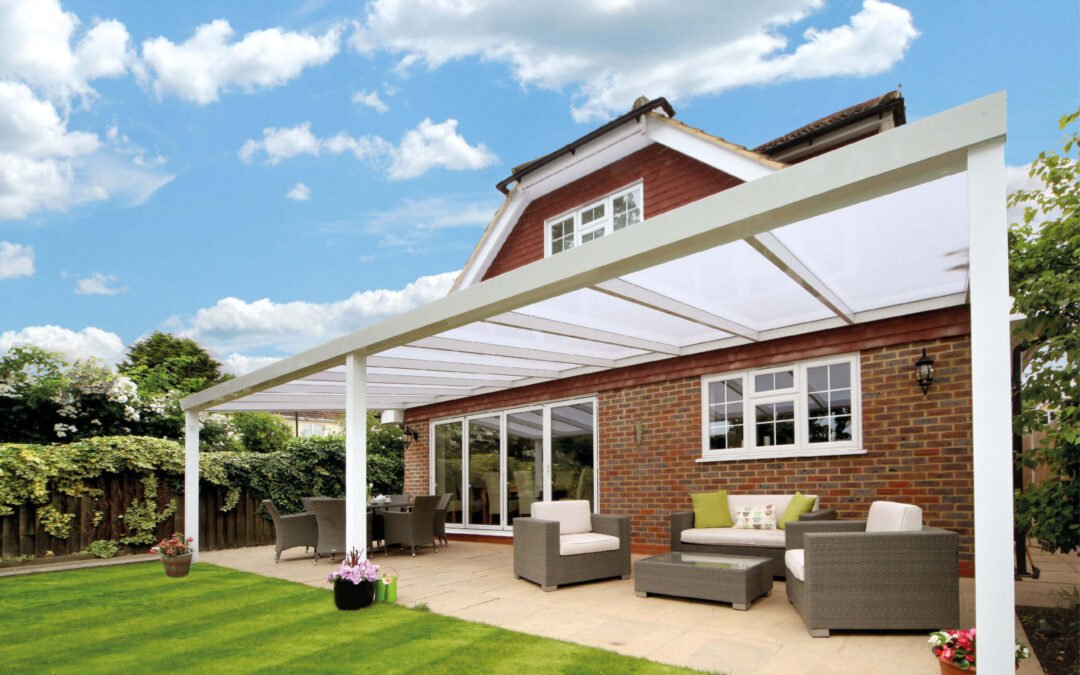It’s a common question we get asked, should you choose a veranda or a conservatory? If you’re looking to expand your living space but unsure whether to choose a veranda or a conservatory this blog will provide you with a comparison of the two and which one is right for you. Many homeowners are unsure which option is right for them to create a more seamless transition between indoor and outdoor living. While both options provide extra space and increase property value, they serve different purposes and suit different lifestyles.
A veranda offers a stylish, semi-open structure that extends your outdoor space, while a conservatory provides a fully enclosed room with greater insulation and usability throughout the year. The key to making the right decision lies in understanding the benefits, costs, and functionalities of each option.
What is a Veranda?
A veranda is typically an open-air structure with a roof the it attached to your property, providing a shaded extension and multiple uses. Verandas typically have a roof supported by posts, made from a variety of build materials and offer the option to add glass sides to create an enclosed glass room.
Key Features of Verandas:
- Open or semi-enclosed structure.
- Can be made from aluminium, steel, wood, or glass.
- Available in various designs, such as lean-to, hip roof, or apex.
- Primarily used for outdoor relaxation, entertaining, and dining.
- Provides shade and protection from the weather but is not insulated.
Verandas are perfect for those who enjoy spending time outdoors but want some shelter from the elements. They create a stylish transition between the garden and the house, making them ideal for year round use, whether it’s summer gatherings or outdoor relaxation.
What is a Conservatory?
A conservatory is a fully enclosed glass extension that serves as an additional indoor living space. Conservatories are designed to be used throughout the year, thanks to them being insulated and offering heating options.
Key Features of Conservatories:
- Fully enclosed structure, with roof, walls and windows.
- Built with uPVC, aluminium, or timber frames.
- Can be designed in styles such as Victorian, Edwardian, lean-to, or gable-end.
- Provides a bright, light-filled indoor space suitable for year-round use.
- Requires heating and ventilation to maintain comfort levels in different seasons.
Conservatories are often used as additional living rooms, dining areas, or even home offices, providing extra indoor space that integrates with the rest of the house.
Key Differences Between Verandas and Conservatories
While both options provide additional space, they differ significantly in terms of cost, usability, maintenance, and functionality. Here’s a breakdown of their key differences:
1. Cost Comparison
- Verandas are generally more affordable, as they require less structural work and fewer materials. Prices vary depending on the size of the veranda and material of choice. They are a more cost-effective way to enhance outdoor living.
- Conservatories are more expensive due to the need for full enclosure, insulation, double glazing, and potentially heating systems. They require more complex construction, often resulting in higher costs. However, conservatories provide a full extension to your property serving as a whole new room compared to verandas providing a sheltered space.
2. Usability & Functionality
- Verandas are best for seasonal outdoor use. While they provide shelter from sun and rain, they may not be suitable for extreme weather conditions and cold temperatures without additional features like retractable screens or outdoor heaters.
- Conservatories despite conservatories still being impacted by weather, i.e. they get very hot in high temperatures or visa verse, they can offer year-round usability. They can function as an additional indoor space that remains comfortable in all seasons, if adequate heating and/or ventilation are in place.
3. Planning Permission & Regulations
- Verandas often fall under permitted development rights in the UK, meaning they usually don’t require planning permission as long as they meet specific size and placement criteria. This provides even further cost saving and ease of having a veranda constructed.
- Conservatories typically require planning permission and must comply with UK building regulations adding additional cost and time to having one constructed. If the planning application is also to be rejected this can be wasted cost.
4. Aesthetic & Home Integration
- Verandas create a seamless connection between the home and garden, enhancing outdoor aesthetics with their stylish, open design.
- Conservatories serve as a more enclosed extension of the home, visually integrating with the existing architecture but often requiring careful design consideration to match the house style.
5. Maintenance & Durability
- Verandas are relatively low-maintenance being very resistant to weather conditions and only requiring occasional cleaning and minor repairs, especially if made from durable materials like aluminium or steel.
- Conservatories require more upkeep, particularly for glass panels, frames, and roofing. Regular cleaning is necessary to prevent dirt build-up, and insulation maintenance is needed for year-round comfort.
Pros and Cons of Verandas and Conservatories
Pros of Verandas
- Affordable compared to conservatories.
- Enhances outdoor living without major construction.
- Allows natural ventilation and fresh air.
- Requires minimal maintenance.
Cons of Verandas:
- Less protection from cold weather and extreme temperatures.
- Doesn’t provide a full room expansion of your home
- Limited usability in winter months unless additional heating is installed.
Pros of Conservatories
- Provides an additional fully enclosed living space and completely usable new room to your property
- Usable throughout the year with proper heating and insulation.
- Increases property value significantly.
- Can serve as a dining room, lounge, or home office.
Cons of Conservatories
- More expensive to build and maintain.
- Can overheat in summer and be cold in winter if not properly insulated.
- Requires planning permission approval
Which One Should You Choose?
Choosing between a veranda and a conservatory depends on your lifestyle, budget, and how you plan to use the space.
If you want an affordable, stylish outdoor space for relaxation and entertainment and don’t require a fully enclosed, insulated space a veranda is the best choice. If you need the latter and a living space that integrates into your home, a conservatory is the better option.
It’s important to consider your local climate when making your decision. Verandas are ideal for mild weather, while conservatories provide year-round comfort.
Finally, with most people budget is the biggest deciding factor. Verandas are more cost-effective, whereas conservatories require a larger investment.
Both verandas and conservatories add value to a home, but they serve different purposes. A veranda is an excellent choice for those who love outdoor living and want a simple, elegant extension of their home, while a conservatory provides a fully enclosed, functional space that can be used throughout the year.
If you’re considering installing a veranda, Verandaluxe offers bespoke designs tailored to your home’s aesthetic and functional needs. Our expert team can guide you in choosing the perfect veranda to enhance your outdoor living experience.
Contact us today for a consultation and let us help you create the perfect outdoor space!

